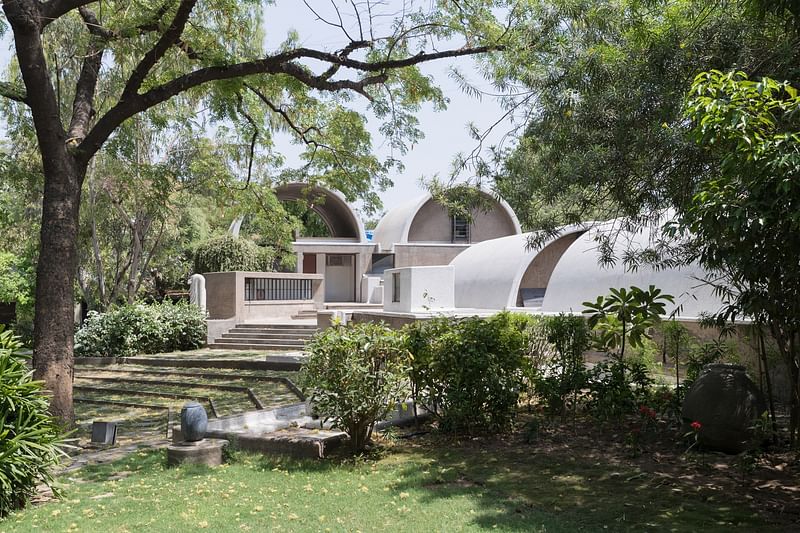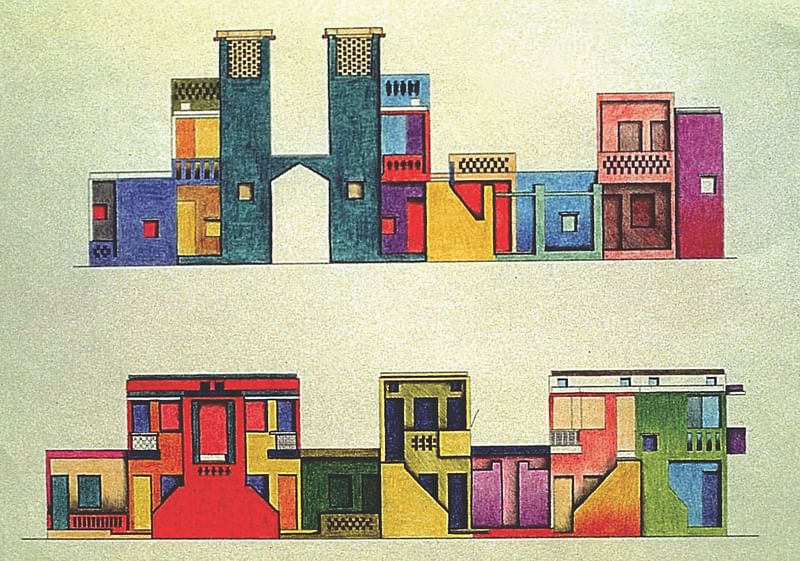Vitra Design Museum to present the first international retrospective of Pritzker Prize-winning architect Balkrishna Doshi
By Mackenzie Goldberg|
Thursday, Feb 21, 2019

Related
The Pritzker Prize-winning architect Balkrishna Doshi has done much more than just design buildings over the course of his 70-year career. Considered a pioneer of low-cost housing, the architect, urban planner, and educator has made it his mission to promote the ways in which buildings and cities can contribute to the health of a society.
In a recent op-ed for the New York Times, Doshi, 91, reminded us that the built environment is like an organism, ever-growing and diverse. Calling for a biological city, the Indian architect wants design to enliven the spirit of the community. "Can we not apply these planning philosophies in the present to create a lasting environment of positive participatory culture?" he asks.

Since opening his own practice in 1956, sustainability, ecology, and spirituality have been cornerstones of Doshi's design philosophy. Next month, the Vitra Design Museum will debut "Balkrishna Doshi: Architecture for the People," a major retrospective covering six decades of his work, that reflects on these underlying ideals and social context. The exhibition will open on March 30th, and remain open through September 8th, 2019.


The first international showing of Doshi's work outside of Asia, the Vitra Design Museum will present his creations—Doshi's prolific list of accomplishments includes having built over 100 buildings—ranging in scale from entire cities and town planning projects to private residences that are just as influential. On display will be numerous models, drawings, and art works from his archives as well as photography, film footage, and several full-scale installations. They date from 1958, during the early days of his practice, to 2014. Among the works that will be presented are pioneering buildings such at the Indian Institute of Management (1977-92), his architectural studio Sangath (1980), and the famous low-cost housing project Aranya (1989).

Having worked with Le Corbusier and Louis Kahn, Doshi fused international modernist principles with local culture and tradition. The exhibition, organized in four parts, will show how his work has humanized modernism and redefined Indian architecture. Beginning with his educational buildings, a key project being his campus for CEPT, the show will go on to examine his approach to social and experimental housing, the many institutions Doshi has participated in building, and lastly, his large-scale town planning projects. Throughout, the exhibit will highlight his ideas of sustainability and aims to root architecture in a larger context.

RELATED NEWS Balkrishna Doshi named 2018 Pritzker Prize recipient


Share
0 Comments
Comment as :